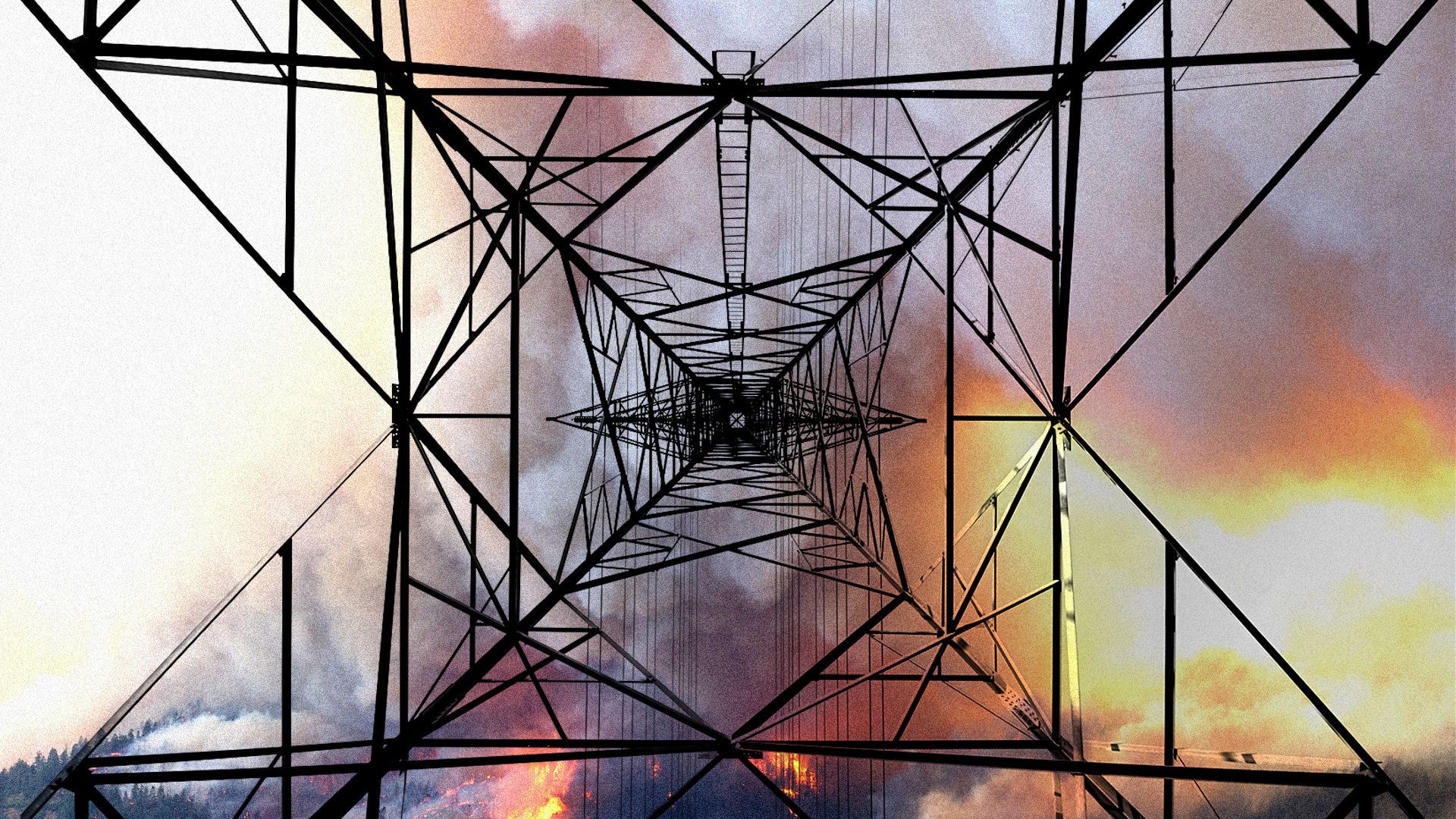
Illustration: Annelise Capossela/Axios
The U.S. electric grid is outdated and overtaxed, and it's only growing more vulnerable under the pressures of soaring demand, extreme weather and climate change.
Driving the news: The conflagration that decimated Maui — in the process putting Hawai'i's utility provider in massive operational and financial jeopardy — is a stark reminder of just how bad this problem is.
Why it matters: Despite years of talk about modernization, the world's largest economy is struggling with a vulnerable grid that does not appear prepared to deal with soaring heat, a warming climate and other disruptive events that could literally turn off the lights for millions of people.
- The already daunting price tag for fixing the grid only gets steeper and steeper as these challenges pile up. As University of Texas at Austin grid expert Joshua Rhodes told Axios Closer's Nathan Bomey this week, the U.S. is "under invested by probably a few trillions of dollars."
- He's not exaggerating: a 2021 report by the National Conference of State Legislatures cited estimates that said at least $1.5 trillion would be needed through 2030 "to modernize the grid just to maintain reliability."
By the numbers: To get a sense of how large the scale of the problem is, consider just how sprawling the U.S. grid is. According to the Department of Energy, there are over 9,200 electric generating units that crank out more than 1 million megawatts of capacity, with 600,000+ miles of transmission lines.
- But natural disasters like wildfires, hurricanes and other calamities are heaping pressure on an electric infrastructure that's "aging, and it is being pushed to do more than it was originally designed to do," the Energy Department says.
What we're watching: With some of these challenges in mind, the Biden administration's signature Inflation Reduction Act dedicated billions to utilities and clean energy.
- "In broad economic terms…the IRA is working as planned. As much as $270 billion has been announced for utility-scale power developments and $50 billion for electric vehicle (EV) supply chains." Eurasia Group analyst Milo McBride wrote in a recent analysis.
Yes, but: That barely scratches the surface of what's needed. The NCSL points out that "while needs vary from state to state, the latest report from the American Society for Civil Engineers found that current grid investment trends will lead to funding gaps of $42 billion for transmission and $94 billion for distribution by 2025."
The bottom line: "Regardless of the exact numbers, investment will be needed to incorporate a more diverse energy supply, increase resiliency and upgrade infrastructure," the NCSL adds.
